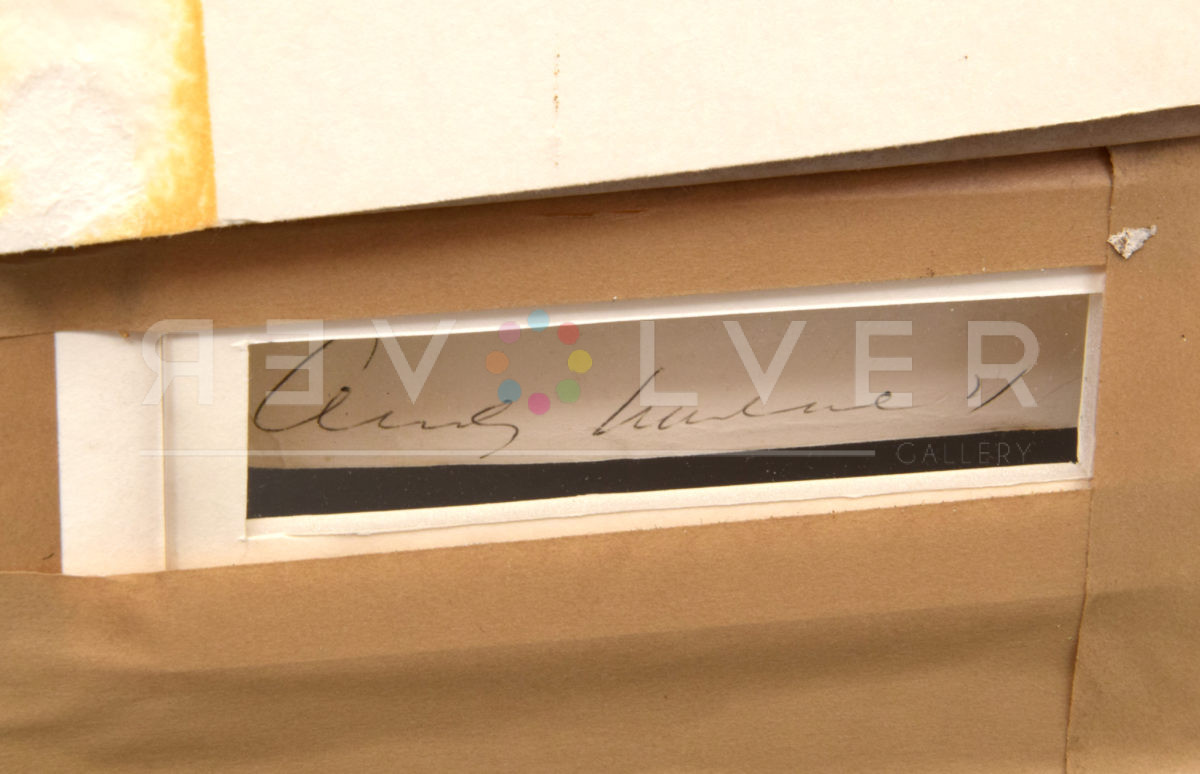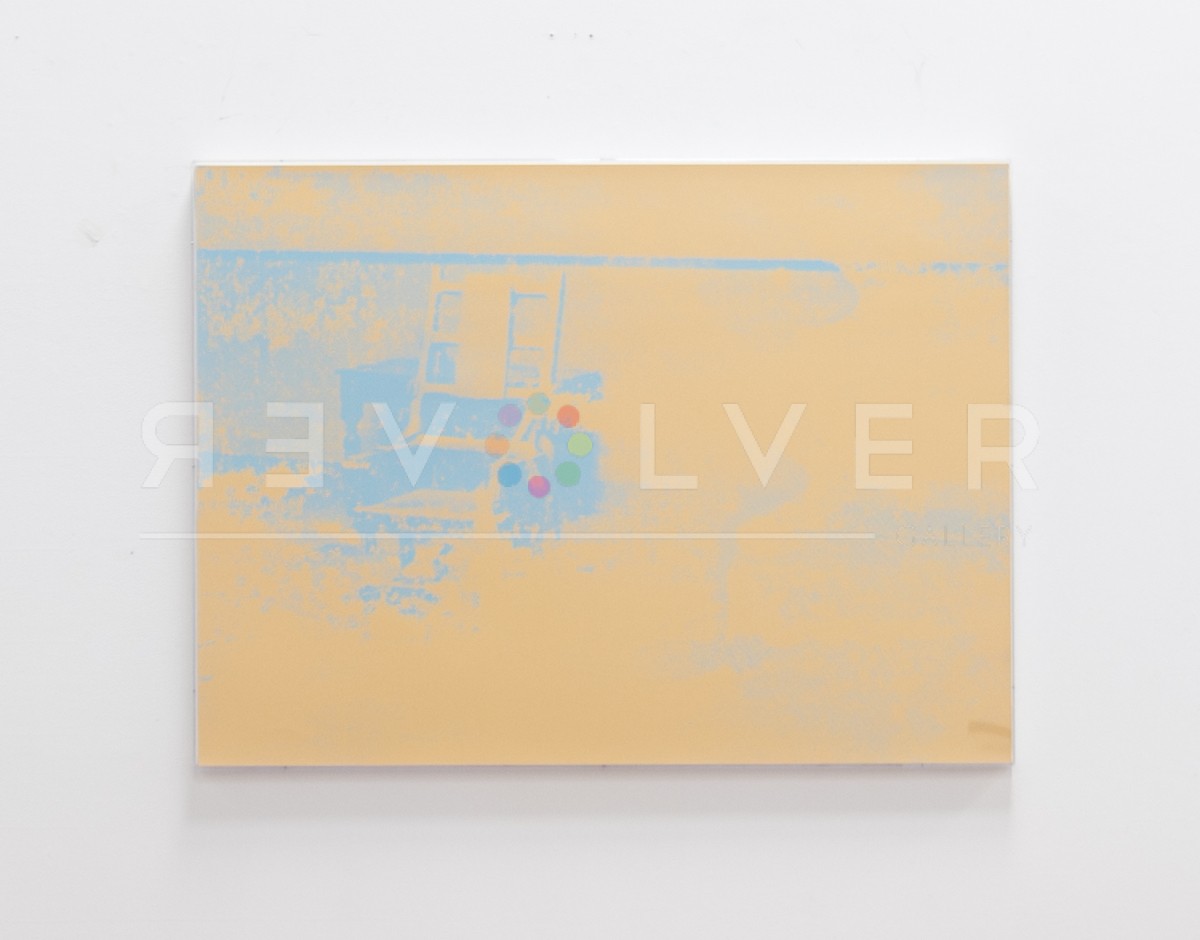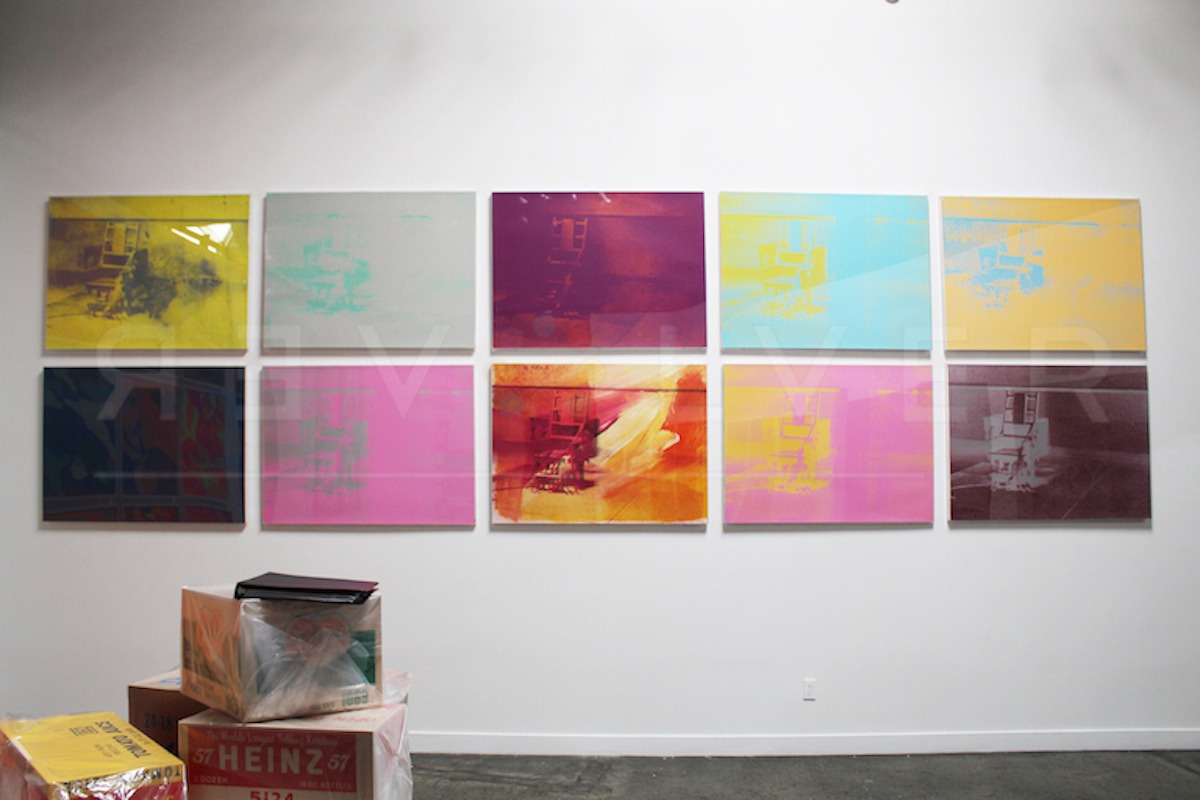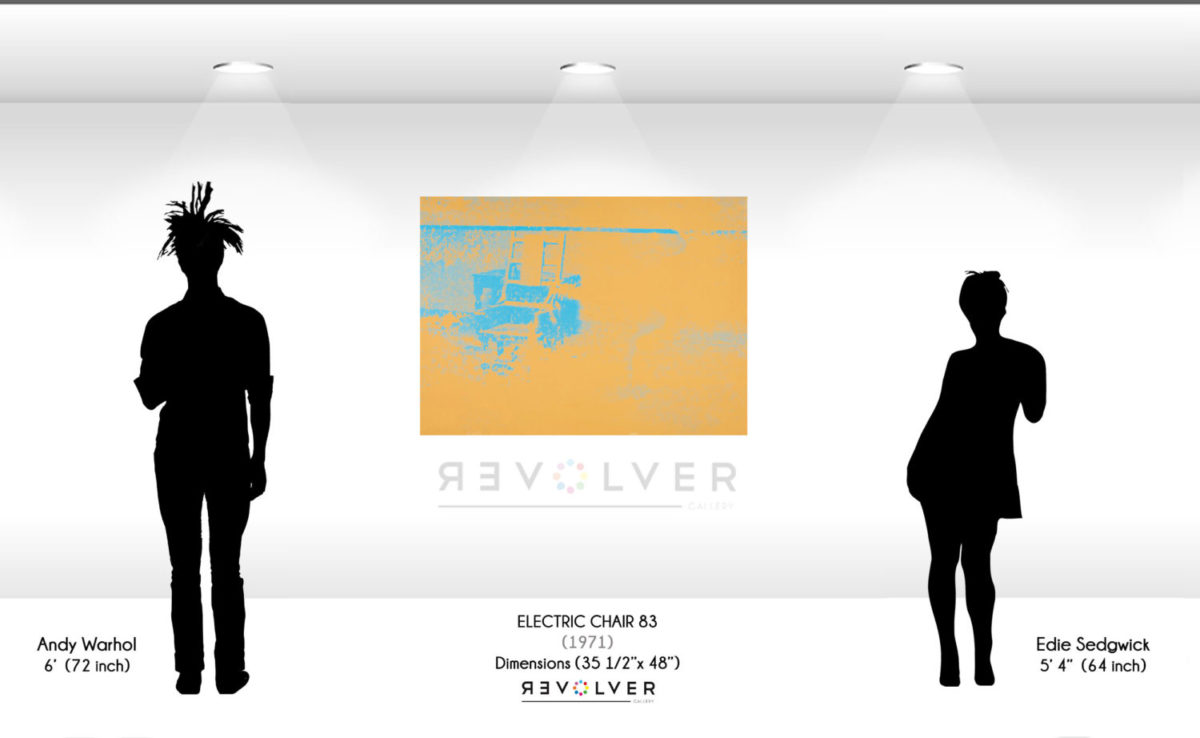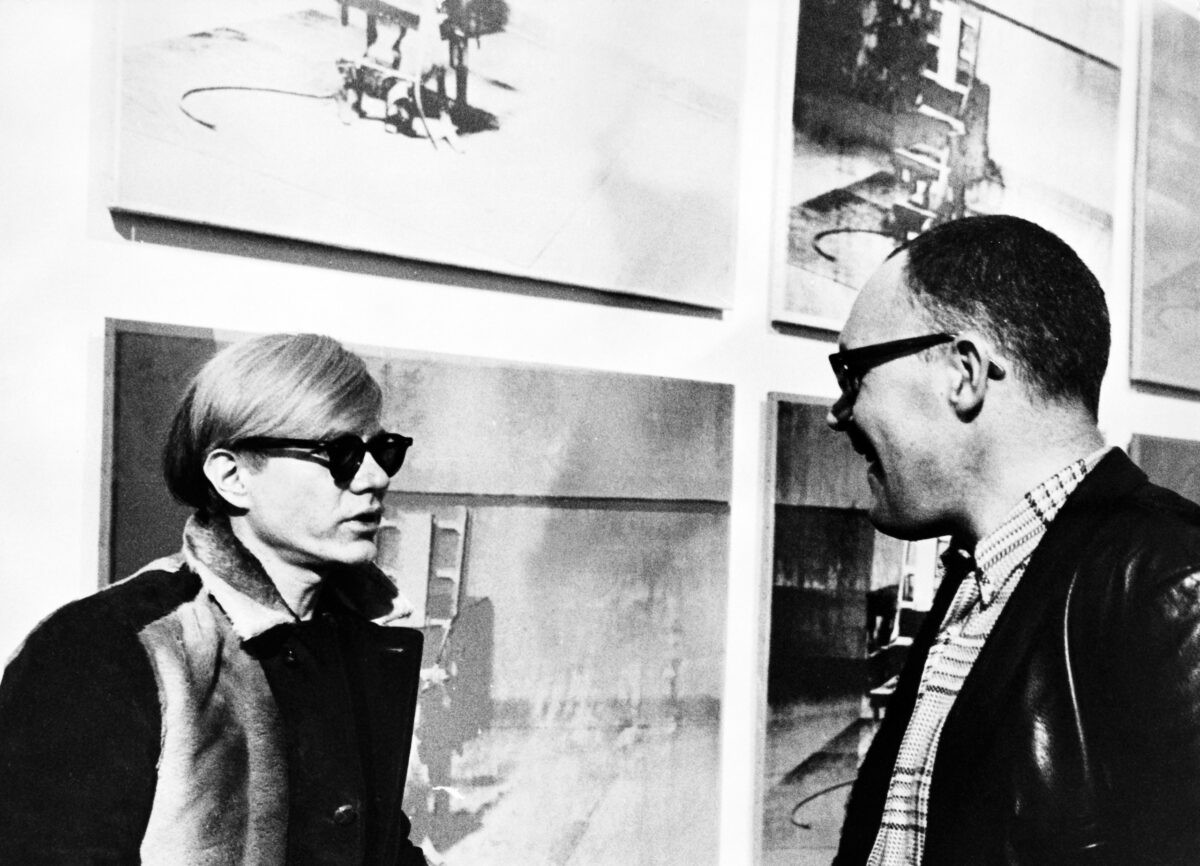Electric Chair 83 by Andy Warhol is a screenprint from the artist’s Electric Chair series, published in 1971. The Electric Chair portfolio is part of Warhol’s notorious Death and Disaster series, a loose collection of artworks focused on macabre imagery related to society’s obsession with death. Notably, the Electric Chair portfolio from 1971 ranks amongst Warhol’s top 10 most valuable series of all time.
The image used for Electric Chair came from a 1953 press release showing the death chamber at Sing Sing Prison. Many of Warhol’s subjects received controversy, but the works in Death and Disaster proved even more scandalizing. Electric Chair was no exception, as it depicts not only an instrument of mortality, but one at the center of one of America’s great social conflicts. The death penalty debate came to a head in the 1960’s, and Warhol completed his first Electric Chair images in 1964. Sing Sing Prison conducted its final executions by electrocution only one year prior.
Despite the controversy the Electric Chair faced, Warhol’s choice of image only reflected the world around him. The images selected for Death and Disaster were, themselves, snippets from the media. In Warhol’s irreverent style, Electric Chair 83 is ripe with social commentary. The screenprint explores the presence of death in our culture, and challenges the viewer to consider their relationship with violence.
Warhol believed that our obsession with death and violence (evidenced by the media) warped our understanding of mortality. “When you see a gruesome picture over and over again,” Warhol said, “it doesn’t really have any effect.” The thought of the electric chair became so familiar to Americans, that they appreciated its meaning less and less. By recasting the electric chair as an artistic subject, Warhol attempts to renew the public’s sensitivity to a gruesome reality.
But Warhol’s observations about desensitization spoke to more than an image’s capacity to shock. Warhol’s ability to capture dominant and defining images made him uniquely capable of toying with his audience’s expectations. He was aware that the electric chair was as much a cultural touchstone as other surface-level images; namely, consumerist and celebrity icons that make up much of Warhol’s other work. Warhol therefore used his interpretation of the image to comment on its role in our culture.
Electric CHair 83’s stylization is emblematic of the series as a whole. The portfolio uses Warhol’s signature stylization and some of his favorite themes while depicting a subject that sets it apart from much of his earlier work. Similarly, Electric Chair 83 retains some of Warhol’s most recognizable artistic flairs, while simultaneously employing less common choices that make it standout. The bright colors are signature Warhol; the dazzling yellow and electric blue make the picture pop out as the center of display. But, where many iconic Warhol screenprints employ sharp, defined contrasts, Electric Chair 83 abstracts its central image, making it appear “drowned out” against the background. This stylization is intentional. The electric chair demands our attention, but our constant exposure to its image dulls its place in our minds. Electric Chair 83 is Warhol at his most critical, and most thoughtful.



